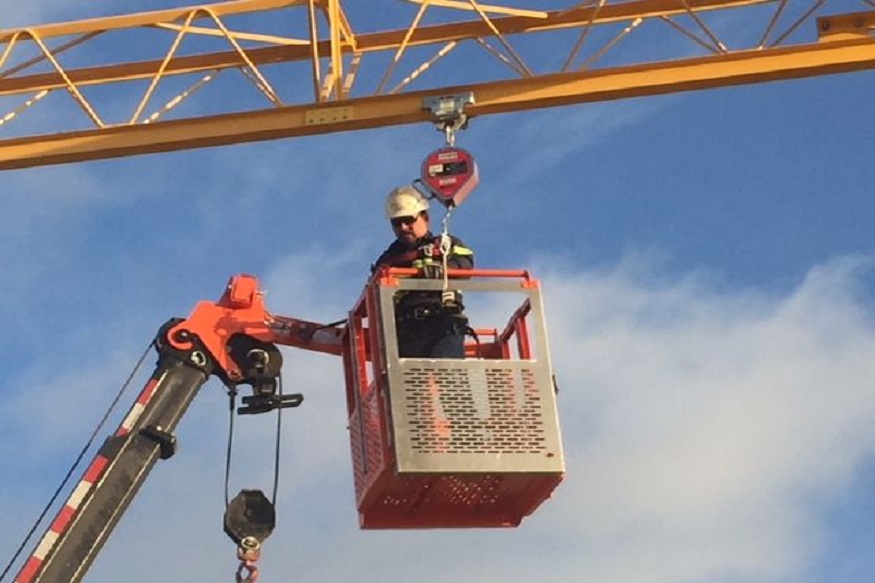Lifting People Safely: How Crane Man Baskets Are Changing Work At Height

Working at height is one of the most dangerous aspects of many industrial and construction jobs. Whether it’s repairing infrastructure, installing steel, or inspecting tall equipment, getting workers safely to elevated job sites is a constant challenge. While scaffolding and aerial lifts are common solutions, they’re not always practical, especially in hard-to-reach places. That’s where the crane man basket comes into play.
A crane man basket is a specialized platform designed to carry personnel via crane to perform tasks at elevated heights. Though it might sound straightforward, this equipment is heavily regulated and engineered with safety in mind. From the materials used in fabrication to the protocols for use, every detail plays a role in protecting the lives of those who rely on it.
Why Use a Crane Man Basket?
Cranes are already indispensable tools on many job sites, and using them to lift people can be incredibly efficient when done correctly. A crane man basket is particularly useful in situations where traditional aerial lifts cannot access the area. This might include projects over water, on rugged terrain, inside tight construction zones, or in places where installing scaffolding would be time-consuming and costly.
The main advantage of crane-lifted baskets is their reach and flexibility. When properly attached to a crane with a certified rigging system, the basket can be maneuvered with precision to safely transport workers to heights that would otherwise require more complicated setups.
Designed for Safety
Safety is the cornerstone of crane man basket design. These baskets are built using heavy-duty steel or aluminum and feature guardrails, safety latches, and non-slip flooring. Many are equipped with internal anchor points for harnesses, ensuring that workers remain securely tied off at all times.
A typical basket includes solid entry gates that lock during use, toe boards to prevent tools from falling, and may even have roofs or overhead protection in certain environments. Each design must meet strict standards set by organizations like OSHA and ANSI, including load testing and regular inspections.
Before each lift, operators and workers must conduct a detailed checklist that verifies load capacity, attachment points, crane integrity, weather conditions, and emergency procedures. This level of redundancy is critical, as the margin for error at elevation is slim.
Regulations and Compliance
In many regions, using a crane to lift people is only permitted under very specific conditions. Employers must prove that other methods are impractical or unsafe and obtain proper permits and engineering documentation before proceeding.
Operators must be trained and certified not only in crane operation but in personnel lifting protocols. The crane itself must be derated, meaning it’s operated at a reduced capacity to ensure added safety. Routine inspections of both the crane and basket are mandatory, and fall protection for the workers is a non-negotiable requirement.
Compliance isn’t just about avoiding fines. It’s about recognizing the inherent risks involved in lifting human beings and taking every possible measure to eliminate them.
Common Applications
The crane man basket is a versatile tool used in many industries beyond construction. In the oil and gas sector, workers are often lifted to perform inspections or maintenance on drilling rigs or offshore platforms. In utilities, they’re used to access power lines, wind turbines, and communication towers. Even in disaster recovery efforts, crane baskets help lift emergency personnel into collapsed buildings or hard-to-reach areas.
Each application comes with its own set of risks and requirements. For example, baskets used in chemical plants may require additional shielding or grounding, while those used near electrical lines must be non-conductive. The flexibility of design allows manufacturers to build baskets tailored to nearly every need.
What to Look For in a Quality Basket
If you’re considering acquiring or renting a crane man basket, several key features indicate quality and compliance:
- Certification Plate: A permanently attached plate should detail the basket’s rated load capacity, serial number, and compliance with applicable standards.
- Weld Quality: Baskets must be constructed with certified welds that can handle dynamic loads and environmental wear
- Safety Accessories: Look for integrated fall arrest anchor points, reinforced floors, and clearly marked entry and exit points.
- Test Documentation: Reputable suppliers will provide proof of load testing and inspection history.
Just as important as the basket itself is the company providing it. Choose suppliers who offer detailed safety training, regular inspections, and technical support for rigging and crane compatibility.
Training and Communication
No matter how well-designed the equipment is, successful lifts depend on well-trained teams. Before any personnel are lifted in a crane man basket, all workers involved should be briefed on the lift plan, safety procedures, and emergency protocols. Communication between the crane operator and basket occupants is critical and is usually maintained via two-way radios or hand signals.
Workers inside the basket must also understand their own responsibilities. This includes proper harness use, tool management, and staying clear of basket edges. A single mistake at height can be fatal, so training and vigilance are constant requirements.
Future Developments
As work environments evolve, so do the tools we use to navigate them. Advances in materials, like lighter but stronger alloys and corrosion-resistant coatings, are making crane baskets more durable and easier to maneuver. Some models are now equipped with smart sensors that track basket tilt, load weight, and crane angle to ensure lifts stay within safe parameters.
Autonomous systems and drone-assisted inspections may eventually reduce the need for human lifts, but for now, crane man baskets remain an essential part of many industrial workflows. As long as people need to reach extreme heights for hands-on tasks, the importance of safe, reliable personnel lifting will remain a priority.
Final Thoughts
Crane man baskets are a powerful solution for working at height, combining the lifting capacity of cranes with specially designed safety platforms for people. When used correctly, they provide safe access to some of the most challenging work environments across a variety of industries.
But their use isn’t without risk. Strict adherence to safety regulations, routine equipment checks, and comprehensive training are essential to every successful lift. When those elements come together, crane baskets offer an unmatched blend of reach, safety, and flexibility.
In a world where jobs are only getting higher and more complex, the crane man basket proves that innovation, when paired with responsibility, can lift us to new heights.








